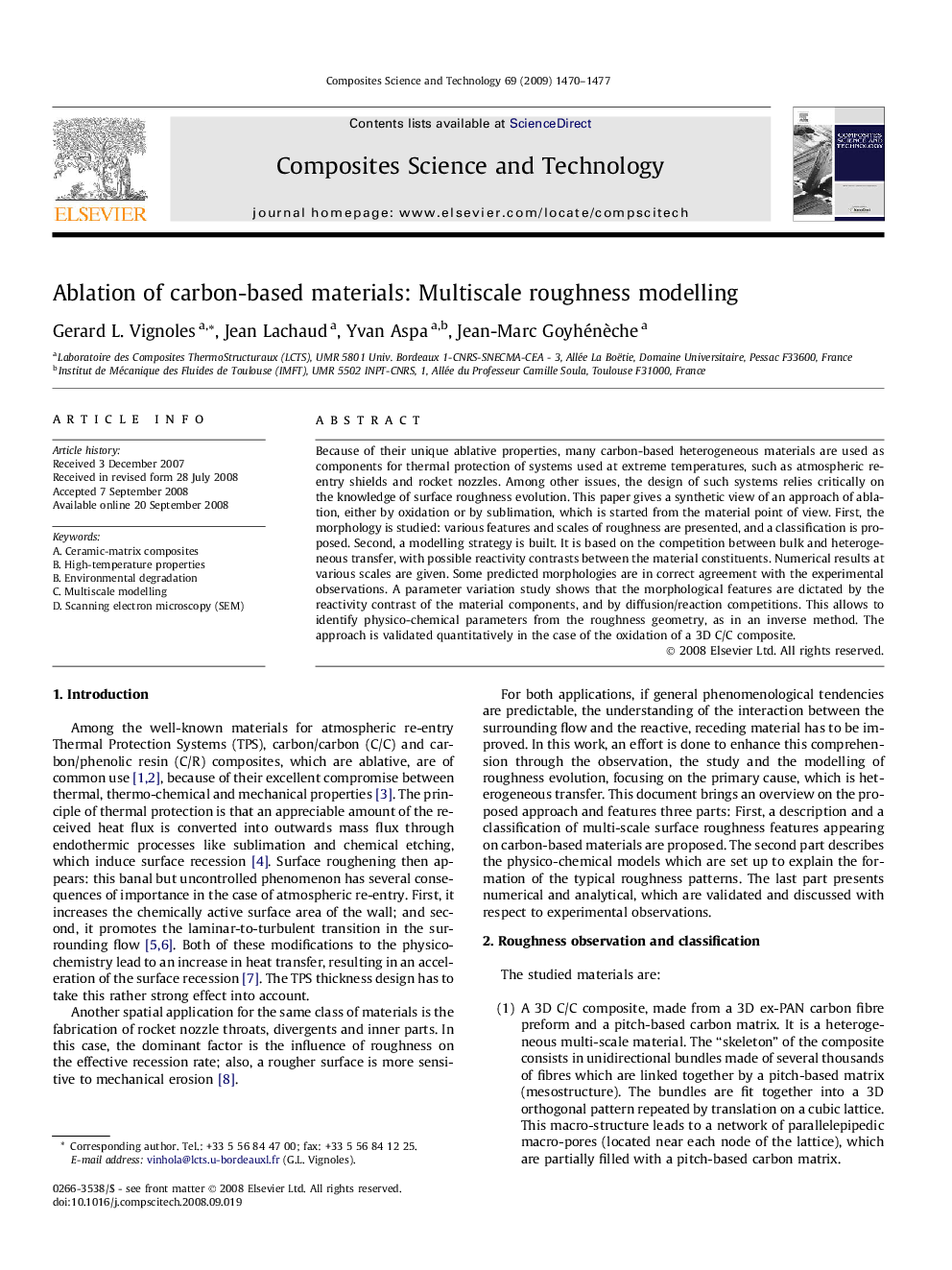| Article ID | Journal | Published Year | Pages | File Type |
|---|---|---|---|---|
| 821660 | Composites Science and Technology | 2009 | 8 Pages |
Because of their unique ablative properties, many carbon-based heterogeneous materials are used as components for thermal protection of systems used at extreme temperatures, such as atmospheric re-entry shields and rocket nozzles. Among other issues, the design of such systems relies critically on the knowledge of surface roughness evolution. This paper gives a synthetic view of an approach of ablation, either by oxidation or by sublimation, which is started from the material point of view. First, the morphology is studied: various features and scales of roughness are presented, and a classification is proposed. Second, a modelling strategy is built. It is based on the competition between bulk and heterogeneous transfer, with possible reactivity contrasts between the material constituents. Numerical results at various scales are given. Some predicted morphologies are in correct agreement with the experimental observations. A parameter variation study shows that the morphological features are dictated by the reactivity contrast of the material components, and by diffusion/reaction competitions. This allows to identify physico-chemical parameters from the roughness geometry, as in an inverse method. The approach is validated quantitatively in the case of the oxidation of a 3D C/C composite.
